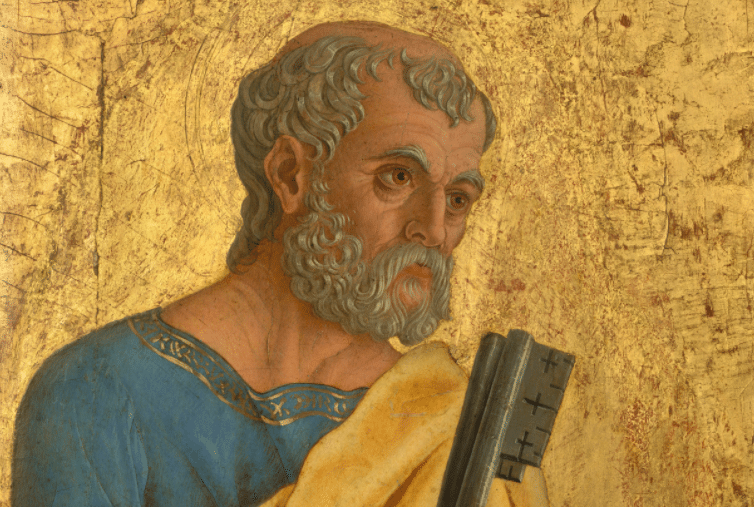In his book The Future of the Catholic Church with Pope Francis, Garry Wills states that there is no evidence before AD 100 that there was any bishop in Rome. He also writes, “The idea of the primacy of Peter was first tried by Pope Stephen (254- 57)” but was denied in the East. Wills later asserts, “Where records were lacking, they were simply made up.” Is that true?
No. First of all, there were probably several house churches in Rome before Saint Peter arrived there, each with its own leader. In time, Peter was recognized as the leader of the entire Church in that city. Although Acts of the Apostles records the martyrdom of neither Peter nor Paul, there is a very long tradition that each was martyred in AD 64 when Emperor Nero began persecuting Christians. From antiquity, Peter and Paul have been venerated together, but Paul has never been described as a bishop in Rome.
Peter disappears completely from Acts of the Apostles after 15:7. Paul refers to him in Galatians 2:7, 8, 11, and 14. Peter is identified as the author of 1 Peter (1:1) and 2 Peter (1:1), with a suggestion that the letter’s author was living in Rome when those letters were written.
In any case, Peter had been leading the whole Church for at least 20 years before he arrived in Rome. The late Father Raymond E. Brown, SS, explains Peter’s leadership in Rome in Q&A 97 in Responses to 101 Questions on the Bible. For more information on literary and archeological evidence of St. Peter in Rome, see Daniel O’Connor’s book Peter in Rome.
No other city has ever claimed that Peter died there. See also Antioch and Rome: New Testament Cradles of Catholic Christianity, by Raymond E. Brown and John P. Meier. We are used to one bishop heading the Church in a given region.
In New Testament times, however, there could be two or more bishops (episcopoi, “overseers”) in the same city. St. Paul’s Letter to the Philippians indicates that in 1:1. In fact, the Letter to the Romans does not acknowledge Peter as leading that Church when this letter was written in the winter of AD 57-58. Before his death as a martyr in Rome in AD 107, St. Ignatius of Antioch wrote a letter to the Church there. He said, “I do not give you orders like Peter and Paul. They were apostles; I am a condemned criminal.”
I very much doubt that Ignatius would have written those words if Peter had never led the Church in Rome. In the mid-second century, the spot where Peter was buried in a pagan cemetery already had a marker that Christians could interpret.
Having read this book by Wills, I think you should be cautious about some of his other historical assertions. He states, for example, that a general persecution of Christians existed in the Roman Empire for only about 12 years between AD 64 and AD 313. In fact, there are many well-known saints who were martyred outside the 12 years that Wills accepts.
It is certainly true that persecution of Christians was not equally fierce throughout the Roman Empire for 250 years, but Wills fails to give an accurate picture of its extent and duration. The emperor Constantine certainly thought that he was building the original St. Peter’s Basilica over the grave of that apostle.
Constantine cut away a huge part of the Vatican hill and completely covered over a pagan cemetery (very risky business to favor a newly tolerated religion!) in order to build that basilica where he did. It was torn down in the early 16th century and gradually replaced by the present one.


